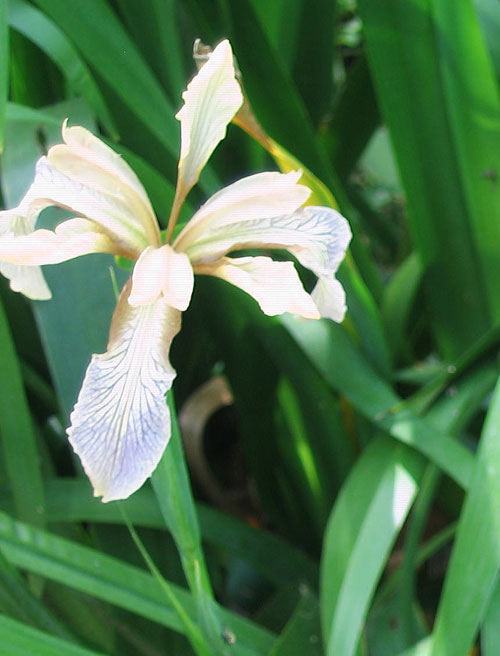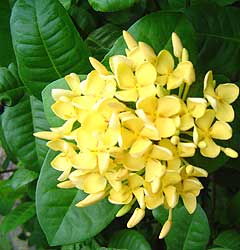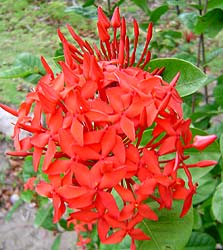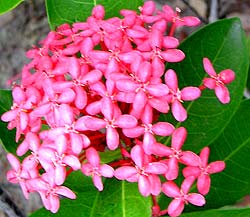Ice
Plant, Highway Ice Plant, Hottentot Fig Delosperma,
Dorotheanthus or Lampranthus or Carpobrotus
edulis
This is a succulent annual or perennial from S. Africa which we saw growing in
pure sand by many of the beaches we visited on the Greek islands of Corfu, Naxos,
Paros and Antiparos late in the spring of 2007. The flowers come in brilliant
colors and this is one tough plant to grow so happily on almost nothing in a
climate where high temperatures can be well over 100° F., where rainfall
is not so common and where winter brings freezing temperatures. I liked it so
much I saved some seeds from the ice plants and some from other wild flowers
in Greece and was hoping to have a "Greek Garden" at our former home
in Montserrat. Now I'll have one in our new garden in Guatemala.
From: South Africa
Planting and Growth: This
is a peculiar plant liking full sun, any type of soil and almost no water.
Text and photographs ©KO 2007/2008
and GreenGardeningCookingCuring.com 2014/2018 |
Photographed: On
the roadside in Sicily, Italy, in 2012.
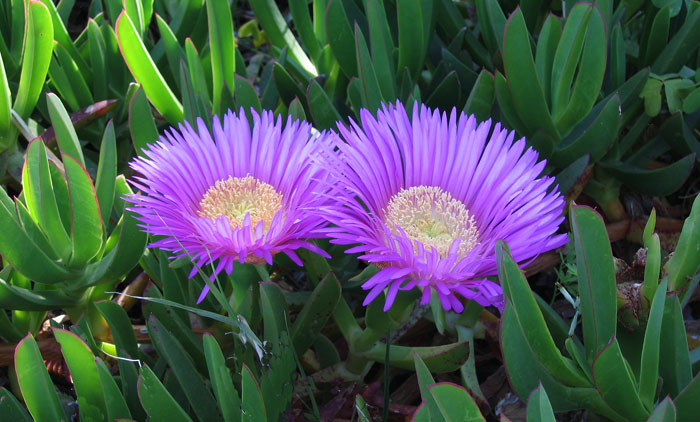
|
Photographed: On
the roadside in Sicily, Italy, in 2012.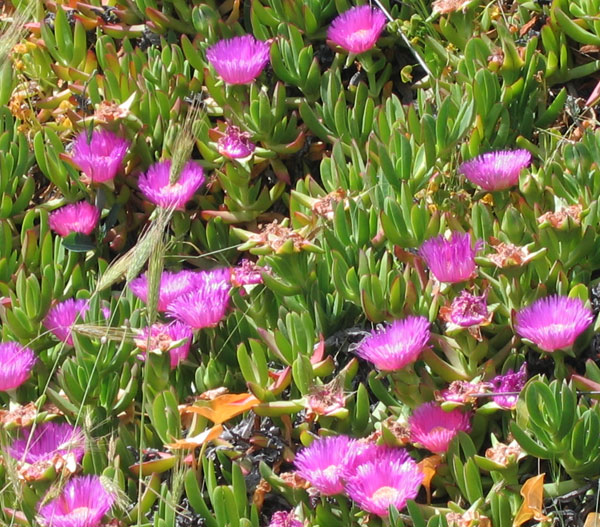
|
Photographed: On
the roadside in Sicily, Italy, in 2012.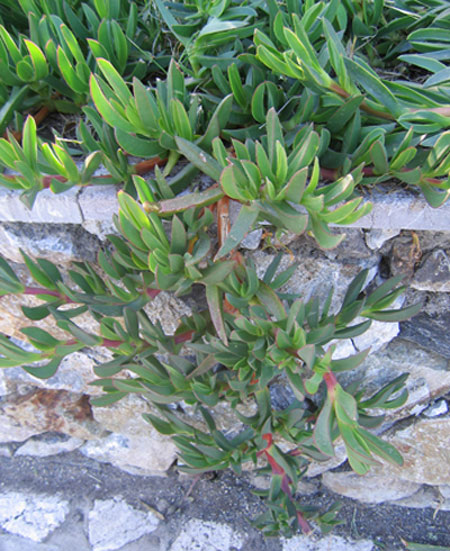
|
|
| |
Photographed: In
the Jardim de Olhao in Agadiz, Morocco, in 2014.
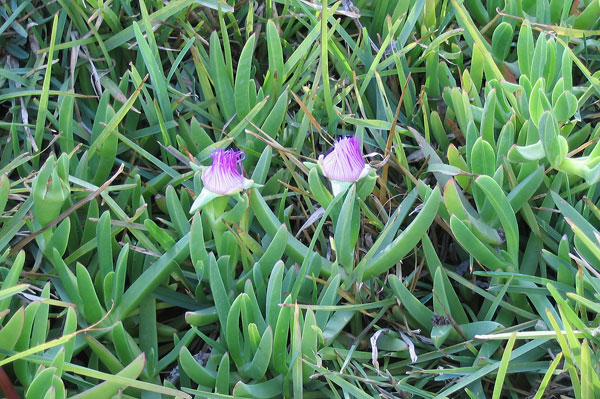
|
Photographed: In
our garden at Lake Atitlan in Guatemala in 2015.
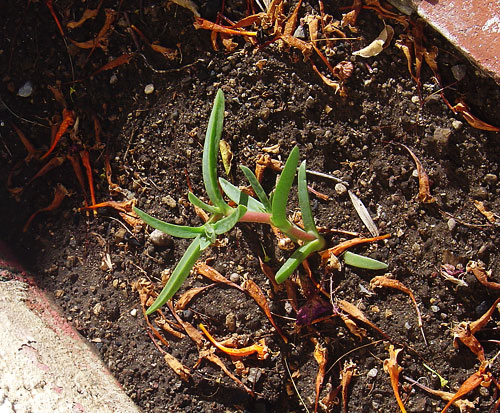
|
|
| |
Photographed: At
the Hacienda San Buenaventura on Lake Atitlan in Guatemala.
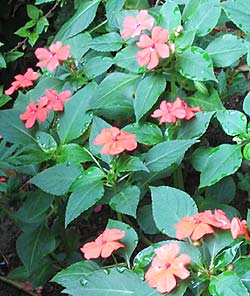 |
**Impatiens,
Jewelweed, Touch-Me-Not, Snapweed, Patience, Busy Lizzie Impatiens
sp.
This is perhaps the best known and most commercial of shade
garden flowering plants. In tropical climates they are perennials,
but not in places where winters bring freezing weather. A
lot of hybrid work is being done to dress up the common look
of this shade garden standby as you can see in the photographs
below.
I think the
changes are lovely.
Benefits: Impatiens plants have a wide variety of
medical benefits. It has anti-inflammatory and fungicide uses along
with being
used as an herbal treatment for bee stings, insect bites,
and stinging nettle rashes. Unfortunately impatiens also carry some
toxic substance(s) that may cause vomiting and diarrhea. Speak to your
physician before using this or any other plant as a health remedy.
From: Primarily Asian and African tropics, but there
are so many plants in this family you may find one or more from other
places.
Planting and Care: This
is the proverbial shade garden blooming plant and it is as easy to
care for as
it is unremarkable. Plant it in good moist soil in the shade
and give it routine watering and you will have a bit of color where
there was only green before.
Text
and Photographs ©KO 2010 and GreenGardeningCookingCuring.com
2013/2018 |
Photographed: At
the Hacienda San Buenaventura on Lake Atitlan in Guatemala.
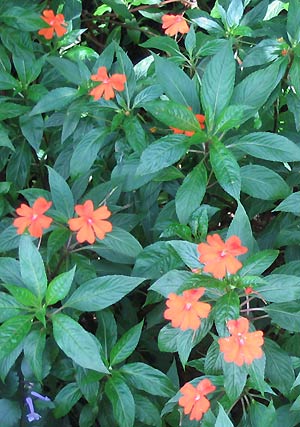
|
|
| |
Photographed: At
the Hacienda San Buenaventura on Lake Atitlan in Guatemala.
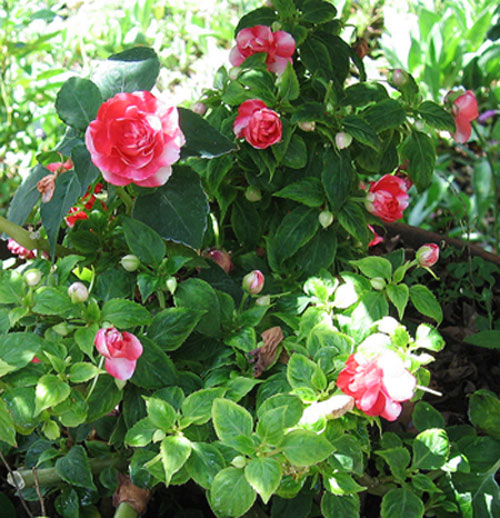
|
Photographed: At
the Winter Garden in Auckland, New Zealand, in 2013.
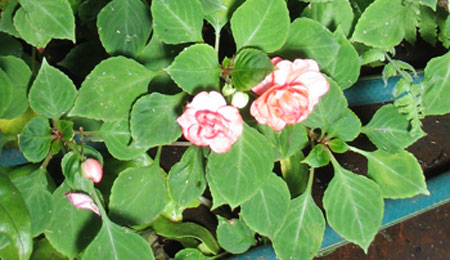 |
|
| **Iguana See
The "W" Page -- WILDLIFE - Iguanas |
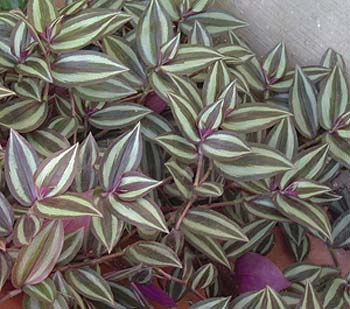 **Inch
Plant, Wandering Jew (1) Tradescantia zebrina
syn. Zebrina pendula **Inch
Plant, Wandering Jew (1) Tradescantia zebrina
syn. Zebrina pendula
With its leaves and spreading nature, the inch plant might be a good option
for a ground cover. Once you plant it though, plan to live with it forever. It
is very difficult to get rid of.
Benefits: Other than its ease of growth as a ground cover it
is used in some places in Mexico as an
herbal
tea.
From: Tropical
areas
of
Mexico,
Central
America
and
Colombia
Photographed: At the Hotel Atitlan on
Lake
Atitlan
in
Guatemala.
Planting and Care: This plant is a true survivor. It will grow
in full sun or full shade and will tolerate a wide range of moisture levels.
In
many places it is considered invasive so be sure you want it before you plant
it.
Text
and Photograph ©KO 2008/2010 and ©GreenGardeningCookingCuring.com
2018
Note: Tradescantia albiflora is a plant in the same family that
has white and green leaves and is otherwise almost identical
to Tradescantia
zebrina |
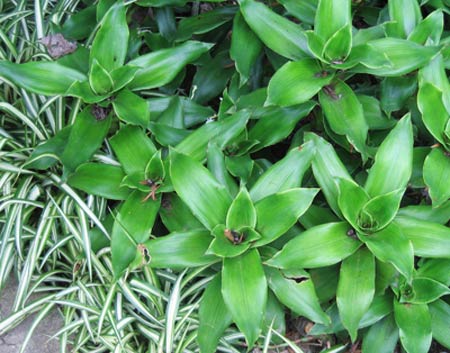 **Inch
Plant, Wandering Jew, Small-Leaf Spiderwort, Wandering Gypsy
Plant, White Spider Weed, River Spiderwort Wandering Willie (2) Tradescantia
fluminensis **Inch
Plant, Wandering Jew, Small-Leaf Spiderwort, Wandering Gypsy
Plant, White Spider Weed, River Spiderwort Wandering Willie (2) Tradescantia
fluminensis
This
is a great ground cover in shady areas of your garden.
Benefits:
From: South America
Photographed: At
the Hotel Atitlan on Lake Atitlan in Guatemala in 2010.
Planting and Care:
This is not a winter hardy plant, but one that moves
easily in a hanging basket from the patio to a bright window
for
the winter. It is a perennial. It prefers to be planted in
full sun or partial shade with routine rainfall or watering.
Notice: This plant is toxic to cats.
Text & Photograph©KO
2010 and ©GreenGardeningCookingCuring.com 2019 |
| |
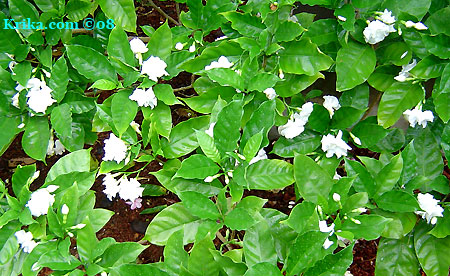 **India
Carnation, Crape Jasmine, Carnation of India, East Indian Rosebay,
Adam's Apple, Nero's Crown, Coffee Rose, Crepe Gardenia Tabernaemontana divaricata and/or
Tabernaemontana coronaria **India
Carnation, Crape Jasmine, Carnation of India, East Indian Rosebay,
Adam's Apple, Nero's Crown, Coffee Rose, Crepe Gardenia Tabernaemontana divaricata and/or
Tabernaemontana coronaria
In Montserrat we had one of these bushes locally called a gardenia, but
it
had
no
appreciable scent and so can't possibly be even in the gardenia family. It has
shiny deep green
leaves and abundant creamy white flowers.
Benefits: It is said to have medicinal
uses, but it is also said to be poisonous.
From: India
Photographed: In
our terrace garden at our former home in Montserrat.
Planting
and Care: The crape jasmine is a hardy bush that grows
at an alarming rate, all while providing lovely white blossoms.
Sadly, they don't have much of a scent. Ours survived in a semi
shady
area with little care; we have seen them also growing as well with
no care. These are wonderful plants to consider for a tropical
garden, but the flowers lack the size and scent that truly defines
the gardenia
of my dreams. This variety prefers bright light shade, moist soil,
and a lot of fertilizer. It will produce a prolific number
of blossoms.
Text and Photograph ©Krika.com
2008/2010 and GreenGardeningCookingCuring.com 2013/2018.
|
|
Indian
Almond, Country Almond, Malabar Almond, Sea Almond, Tropical
Almond Tree Terminalia catappa
Left untrimmed this tree will reach
a mature height of over 100 feet. It has large leaves and provides
deep shade beneath its very large branching limbs. When the weather
becomes very hot and dry it loses its leaves, but not before
turning them a deep red.
Benefits: In
Tobago in years past, almonds from this tree were coveted as
they are delicious. Now, with the use of pesticides and other
toxic garden chemicals the almonds are left to their own devices.
The wood of these trees has been used in the building of canoes
and there are many and varied traditional uses for its leaves.
From: Its native environment isn't certain as it
is a tropical tree that spread more or less around the globe in tropical
environments.
Photographed: At the Crown Point Hotel in Crown Point,
Tobago, in 2018.
Planting and Care: As always, when someone wishes
to plant a tree I advise them to seek advice from the seller of their
little tree or from their local college or university agricultural
department. That being said, this wonderful tree likes to live in full
sun and to be planted in sandy loam with a pH of between 5.5 and 6.5.
It will also appreciate year round routine rainfall or watering until
it is fully adapted to your garden environment at which point it can
handle some degree of drought.
Text
and Photographs ©KO 2008 and GreenGardeningCookingCuring.com
2018 |
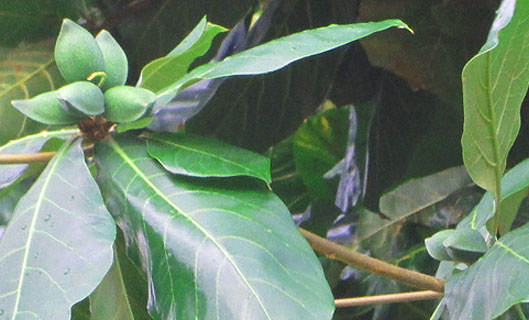 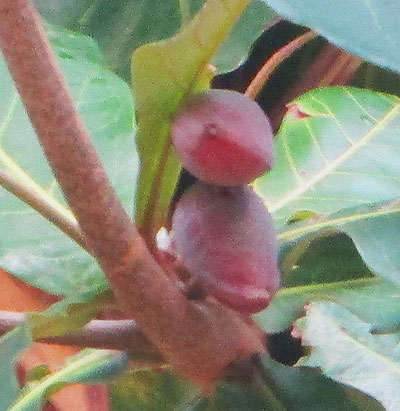 |
| **Indian
Borage See
The "T" Page -- THYME -- Spanish Thyme |
Indian
Hawthorn, India Hawthorn Rhaphiolepsis indica (probably
'Springtime')
This is a warm weather plant that grows well as a border for the house foundation,
as a hedge and even as a small tree.
Benefits: The flowers of these lovely plants produce edible
berries which are often used to make jam.
From: South Asia and Japan
Photographed: In a private garden in Sicily, Italy, in 2012.
Planting and Care: Grow in full sun in relatively moist soil
to have a fall and winter blooming joy in what can be a pretty dull garden
in those times of the year.
Text and Photograph ©GreenGardeningCookingCuring.com
2014/2018
My
#28 Shrub Mystery was solved by Glenn a visitor to my website
who lives in Brisbane, Australia. Many thanks for your help. |
|
| Indian
Mulberry See
The "N" Page -- NONI |
| **Indian
Tree Spurge See
the "P" Page -- PENCIL TREE CACTUS |
| **Indian
Tulip Tree See
The "P" Page -- PORTIA TREE |
| Indigo
Spires Sage See the "S" Page -- SALVIAS
-- Indigo
Spires Sage |
Infusion
An infusion is made when you pour boiling water over plant parts and drink
it as a tea. When it is suggested that you make an infusion, do just
that. Do not boil the plant materials as they may prove more damaging
than helpful. A continuing struggle between me and my husband over "cures"
might be summed up well for everyone, "Some is good, more is not better."
Text ©KO 2008/2010
|
Insects
in our tropical garden See
The "W" Page -- WILDLIFE
Please
also See
the "P" Page PESTICIDES
Those listed are the only ones we use and all are natural products. |
|
IOCHROMA |
Iochroma,
Violet Tubeflower, Mini Angel Trumpet Iochroma grandiflora
Benefits:
From: Central and/or South America
Photographed: In the Botanical Garden in Naples, Italy.
Planting and Care:
Text
and Photographs ©GreenGardeningCookingCuring.com 2012/2018 |
|
| |
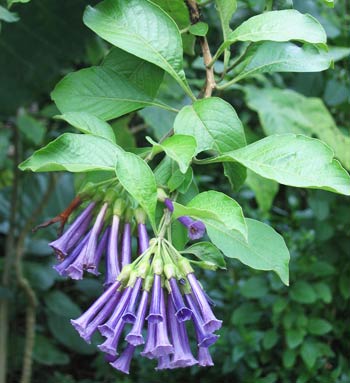 Purple
Bells, Indigo Iochroma Lochroma 'Indigo' lochroma
warscewiczii Purple
Bells, Indigo Iochroma Lochroma 'Indigo' lochroma
warscewiczii
This is an unusual flowering shrub that will bloom for
months and months.
Benefits: This lovely plant will not only
look good to us, it looks good to butterflies and hummingbirds
too.
From: South America
Note: Contact
with the sap of this plant can be irritating so it is probably wise
to use gloves when working with it. All parts of the plant are very
toxic if ingested.
Photographed: In the Botanical Garden at the Hotel
Atitlan on Lake Atitlan in Guatemala.
Planting and Care: This plant likes to be in either full sun
or semi shade.
Text & Photograph ©KO
2010 and ©GreenGardeningCookingCuring.com
2012/2018
|
| |
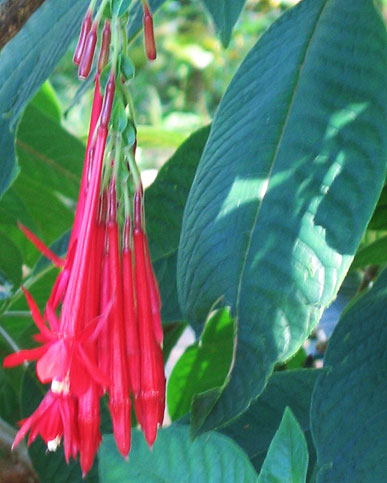 Iochroma
fuchsioides (red) Iochroma
fuchsioides (red) |
| |
| |
|
IRISES
This
is a huge family of plants. They are perennials
growing from creeping rhizomes, but in
dry places they grow
from bulbs. They commonly found in gardens in temperate climates
around the world. For the most part, irises are not fussy about
their
environment, though there are species that grow best in or
on the edge of a body of fresh water.
|
**Bearded
Iris
This is a flowering plant I loved at first sight when I was a very young child.
I loved them then and I still do.
Benefits: Beautiful flowers on very easy to grow plants.
From:
Planting and Care: For all of its elegant beauty, the
bearded iris is hardy. They even grow and flower beside multi-lane highways in
Mexico
City. Give them full sun in more northerly places and some afternoon shade in
hotter climates and they'll be just fine. Water when dry and always plant them
in places where there is good drainage. They do prefer a slightly acidic soil
which should be easy to provide. With some of these beauties in your garden,
you will never be disappointed especially with the lovely delicate scent of their
lush flowers.
Text and Photographs ©GreenGardeningCookingCuring
2014/2018 |
Photographed: We
found this one growing in the Palermo, Italy, Botanical
Garden.
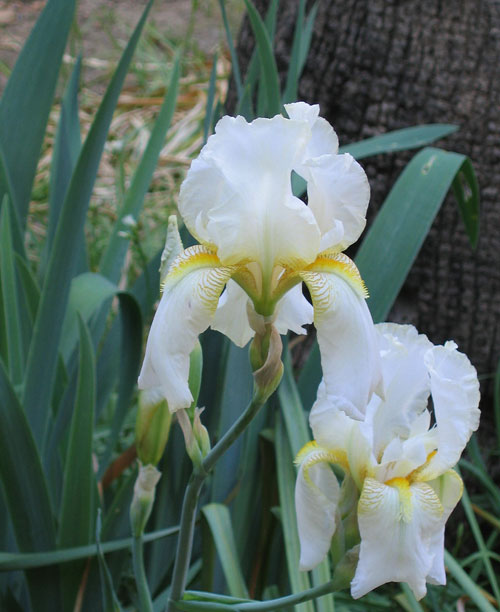
|
|
| |
Photographed: This
appeared to be something of an
after thought in the Naples, Italy, Botanical Garden.
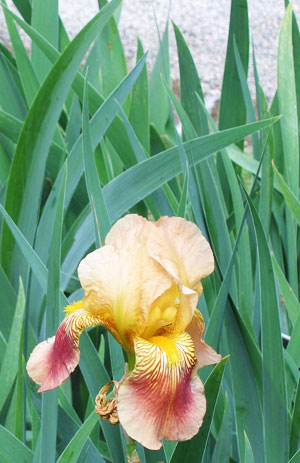
|
Photographed: We
found this one growing in the city street gardens in Malaga,
Spain.
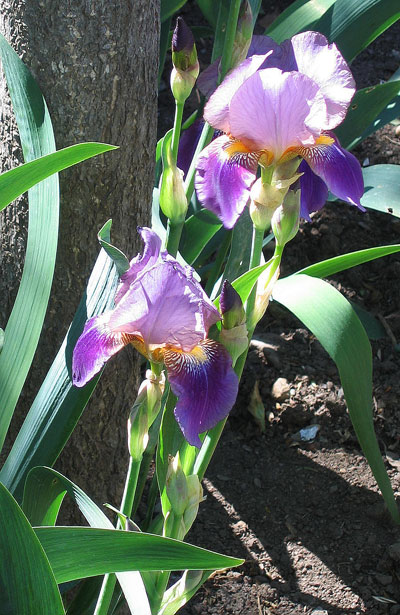
|
Photographed: In
the Buenos Aires, Argentina, Botanical Garden.
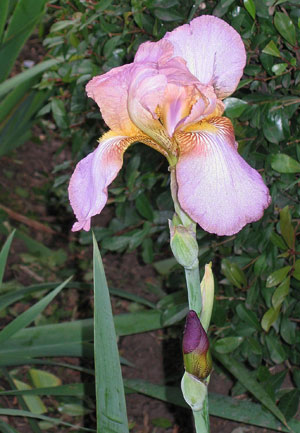
|
|
Photographed: In
the Naples, Italy, Botanical Garden in 2014.
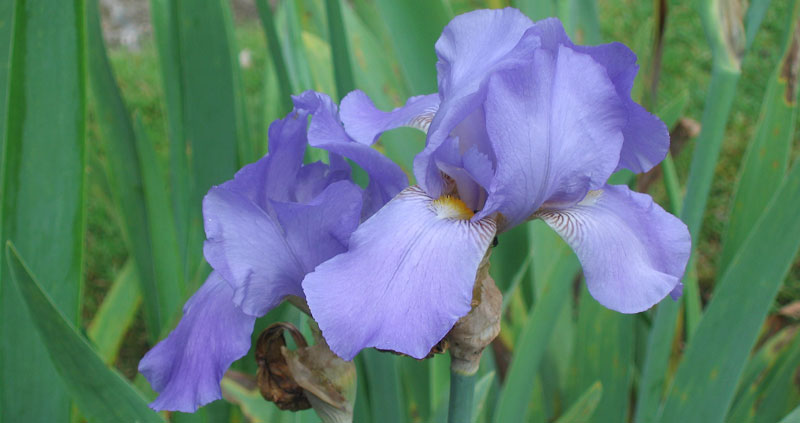
|
Photographed: This
appeared to be something of an after thought in the Naples,
Italy, Botanical Garden.
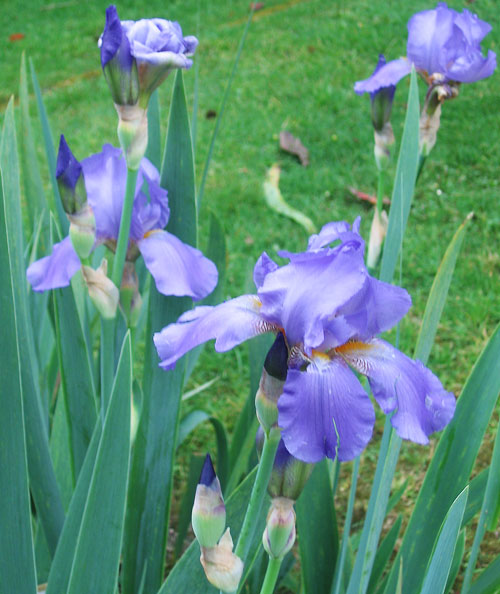
|
Photographed: This
appeared to be something of an after thought in the Naples,
Italy, Botanical Garden.
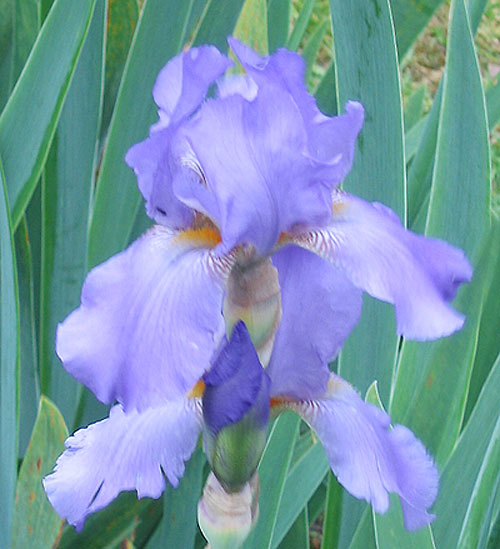
|
|
Photographed: In
the Naples, Italy, Botanical Garden in 2014.
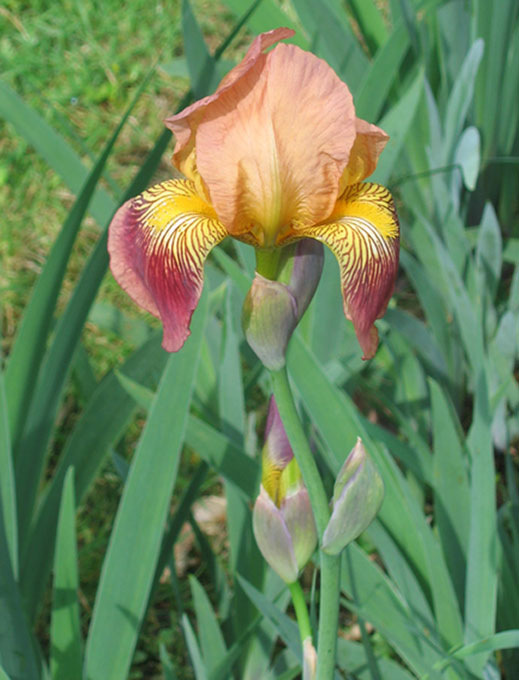
|
Stinking
Iris Flower, Gladdon, Gladwin Iris, Roast-beef Plant,
Stinking Gladwin Iris foetidissima
I don't think this is a real knock out iris, but it
probably would be a good choice for an iris collector. Its unappealing
name comes from the fact that its leaves have a meaty smell when
brushed. Left alone it isn't an issue.
Benefits:
From: Britain
Photographed: In the Botanical Garden in Naples, Italy, in 2014.
Planting and Care: As you can imagine from its native country
of Britain, this is a temperate climate iris which will do just fine through
those terrible winters. Plant it where it will receive full sun and regular
rainfall or watering.
Text and Photograph ©GreenGardeningCookingCuring.com
2015/2018
|
|
|
**Twelve
Apostles, Walking Iris Neomarica gracilis
These are not large iris flowers, but they do stand out for their combination
of colors and patterns. The foliage of these plants is no larger than about
2 feet tall. I
had these lovelies growing along the the entrance walkway to
our home in Guatemala and have learned a little more about them.
First, they are much like walking iris. They bloom for a day
at which point the stem leans over and attempts to plant itself.
So far, they appear to bloom twice a year, heavily in the cool
dry winter months and lightly in the mid summer rainy season.
From: Central
and South America
Planting and Care: Plant in full sun as I have seen them
growing or in bright light and they'll do just fine with routine rainfall
or regular watering.
Text and Photograph ©GreenGardeningCookingCuring.com
2015/2018
|
Photographed: At
the Hotel Atitlan on Lake Atitlan in Guatemala in 2010.
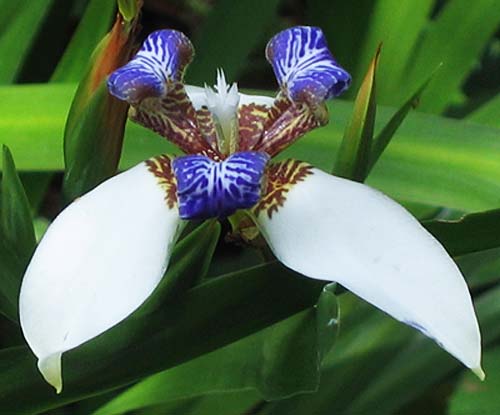
|
Photographed: In
our garden at Lake Atitlan in Guatemala in 2015.
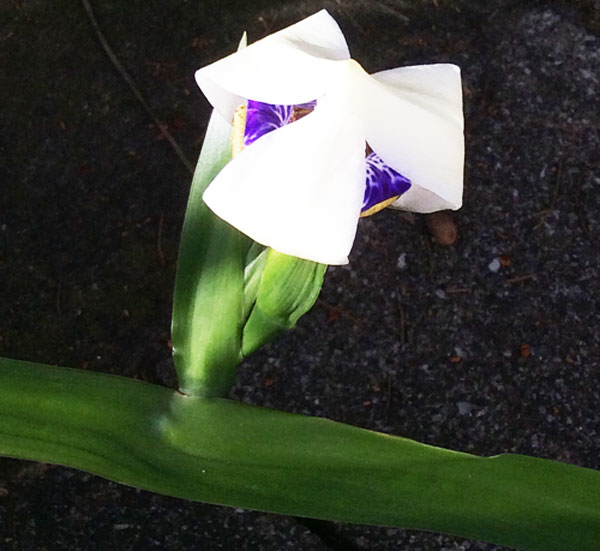
|
|
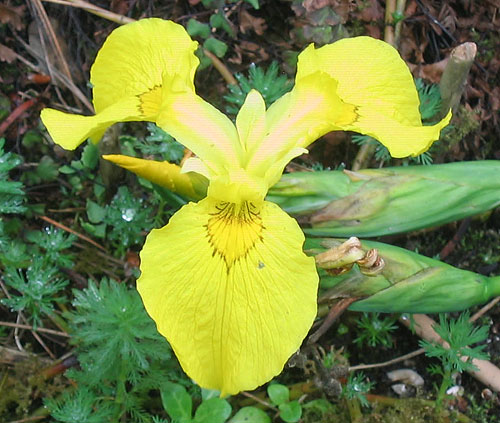 Yellow
Iris, Yellow Flag, Water Flag Iris pseudacorus Yellow
Iris, Yellow Flag, Water Flag Iris pseudacorus
While I love almost every iris I've met, this one is especially appealing. It
is tall, 3 feet or more, and its bountiful yellow flowers are delightful.
Benefits: This
is an especially valuable plant in that it has the capacity to take in heavy
metals through its roots.
From: Britain
Photographed: In the Botanical Garden in Naples, Italy, in 2014.
Planting and Care: This is one of those many irises that prefer
an aquatic environment.
Text and Photograph ©GreenGardeningCookingCuring.com
2015 |
Yellow
Iris and Papyrus
Photographed: In the Orto Botanico in Naples,
Italy, in 2013.
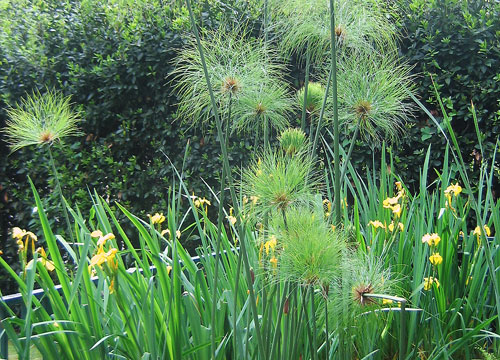
|
Photographed: In
the Orto Botanico in Naples, Italy, in 2014.
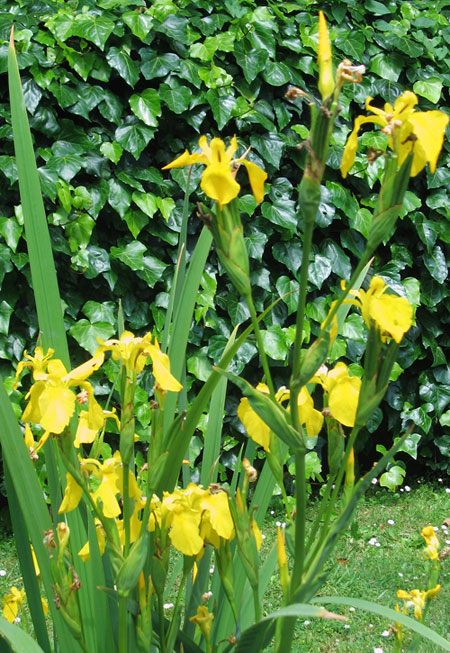
|
|
| |
Photographed: In
the Orto Botanico in Naples, Italy, in 2013.
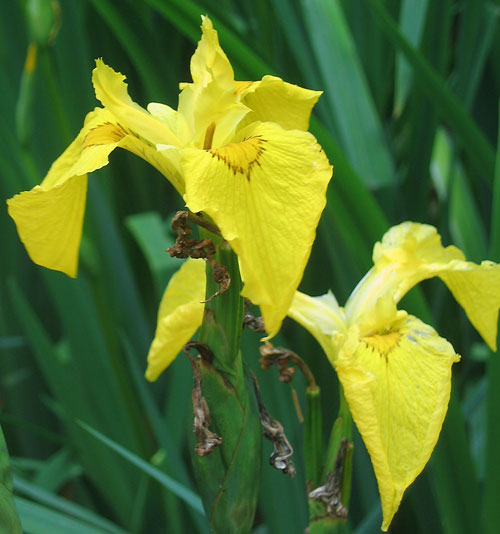
|
Photographed: In
the Orto Botanico in Naples, Italy, in 2013.
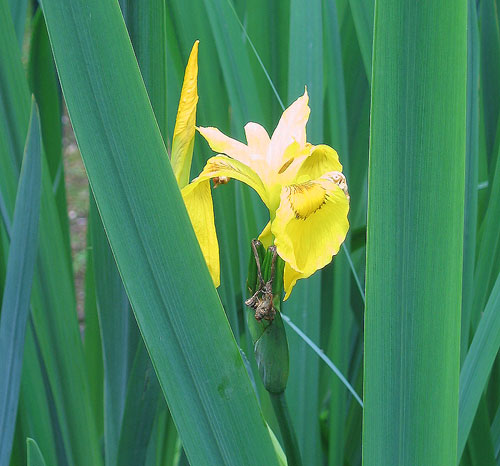
|
|
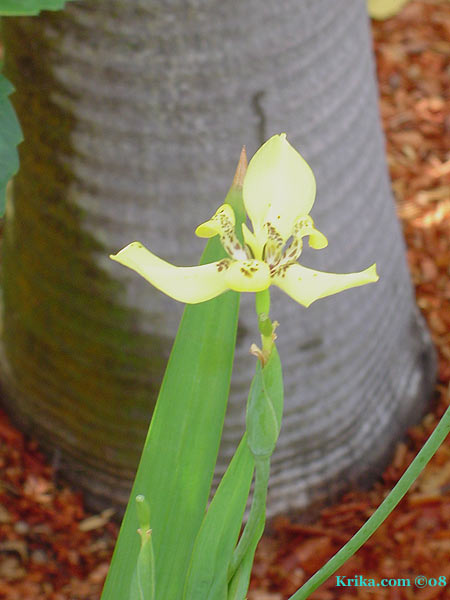 **Walking
Iris, Yellow Walking Iris Iris
Neomarica Longifolia or Trimezia martinicensis **Walking
Iris, Yellow Walking Iris Iris
Neomarica Longifolia or Trimezia martinicensis
This
is a delightful variety of iris that starts off flowering
in a very minimal way and then works itself up into producing
a lovely show. It proved to be very hardy, handling droughts
and acid rains along with falling ash from the Soufriere
volcano in Montserrat.
From: Central and South America
Photographed: This photograph was taken in
the garden by our driveway at our former home in Montserrat.
Planting and Care: The walking iris is able
to grow well in full sun or shade and pretty much with or without
water. It produces flowers on an ever extending
branch that eventually falls over and takes root; hence the
name walking iris.
Text and Photograph ©Krika.com
2008 and ©GreenGardeningCookingCuring.com 2018 |
Iris
Mystery #1 and #1a
Photographed: At the Hotel Atitlan on Lake Atitlan
in Guatemala.
Photographs ©KO
2010
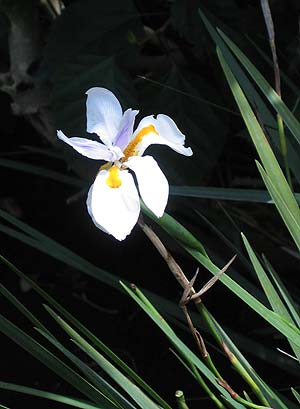
|
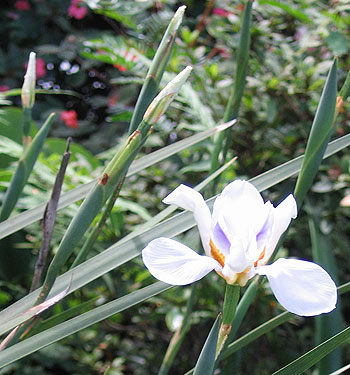
|
|
Iris
Mystery #2
Photographed: At the Hotel Atitlan on
Lake Atitlan in Guatemala.
Photograph ©KO
2010 and ©GreenGardeningCookingCuring.com 2018
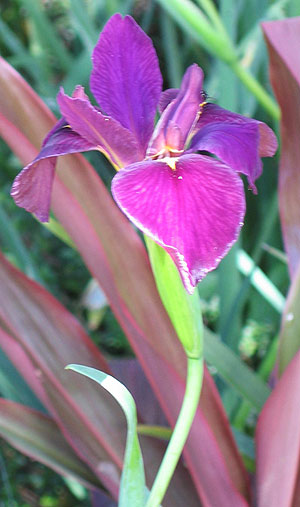
|
|
| **Ironwood See
the "C" Page -- CASUARINA TREE |
**Italianelle
Pepper See
The "P" Page -- PEPPERS
|
Ivy,
English Hedera helix
This is another of the very old standbys in English and New England gardens.
It is perfect for growing under trees where grass has difficulty thriving. I
have not often seen it in more tropical climates and that's a shame because
ivy
has some unexpected very positive qualities.
Benefits: As it turns out this standby plant is good for the
environment and especially good for you. "Available in all kinds of colors and
shapes, this
climbing vine helps clear out formaldehyde.
It’s
super versatile, too: You can grow it in hanging baskets, low planters, or even
as a topiary." Thank you Yahoo news.
From: Europe and Western Asia
Photographed:
Planting and Care:
Text ©GreenGardeningCookingCuring.com
2013/2018 |
|
|
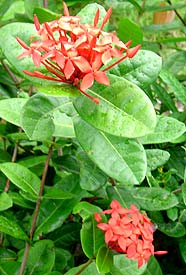
|
**Ixora Uxorial
martyrs Talisman and Binned or Uxorial cochineal
A member of the coffee family, this flowering bush blooms almost all year, though
summer and fall are best. After a while, we had only red and yellow
varieties
and
I
like
the yellow ones best. I had the pink ones removed as they never seemed
to
thrive.
Benefits: Ixora is said to have medicinal uses from the flowers
and from the bark, though I don't know what they are. In Asia the roots are
used to treat diarrhea and stomach problems.
From: The East Indies
Photographed: In our garden at our former home
in Montserrat. The white ixora we photographed at a friend's
home in Woodland's, Montserrat. The large photograph of red ixora
was taken in the Jardin Botanique in Tahiti in 2013 and the large
pink ixora was taken in Crown Point, Tobago, in 2017.
Text & Photographs
© KO 2008 and ©GreenGardeningCookingCuring.com
2013/2018 |
|
|
|
|
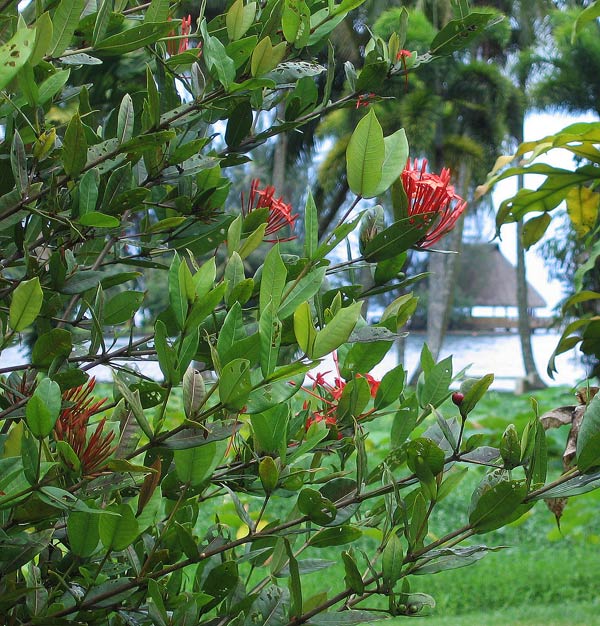
|
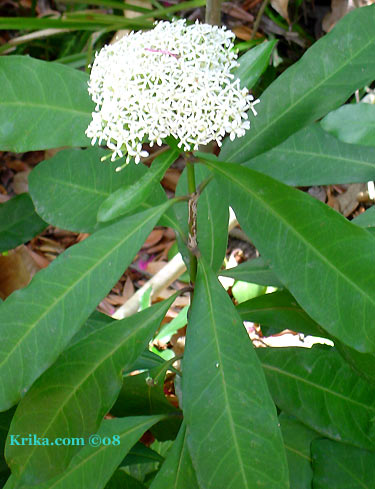
|
White
Ixora Ixora finlaysoniana syn.
Ixora fragrans
Ixora are not my favorite plants. Until I saw the white
flowering ixora in the photograph to the left I felt that only
the yellow had any merit and even then not much. I had removed
all of the pink ixora from our garden and many of the red as well.
We still have a few red flowering ixora and one huge yellow flowering
plant. In our nursery garden we now have a few cuttings of the
white ixora which seems the best of all. The white flowering ixora
is wonderfully scented and its delicate flowers seem more at one
with its leaves.
Benefits: Attracts butterflies and hummingbirds
From: Thailand
Photographed: At a friend's home in Montserrat.
Planting and Care: Plant this shrub in full sun
and give it a good regular watering to keep it happy. Its blooms
are not real standouts, but they do smell heavenly. At its best
it will be about 5 feet tall.
Text and photograph ©GreenGardeningCookingCuring.com
2018
|
|
 **Inch
Plant, Wandering Jew, Small-Leaf Spiderwort, Wandering Gypsy
Plant, White Spider Weed, River Spiderwort Wandering Willie (2) Tradescantia
fluminensis
**Inch
Plant, Wandering Jew, Small-Leaf Spiderwort, Wandering Gypsy
Plant, White Spider Weed, River Spiderwort Wandering Willie (2) Tradescantia
fluminensis

 Iochroma
fuchsioides (red)
Iochroma
fuchsioides (red) Yellow
Iris, Yellow Flag, Water Flag Iris pseudacorus
Yellow
Iris, Yellow Flag, Water Flag Iris pseudacorus **Walking
Iris, Yellow Walking Iris Iris
Neomarica Longifolia or Trimezia martinicensis
**Walking
Iris, Yellow Walking Iris Iris
Neomarica Longifolia or Trimezia martinicensis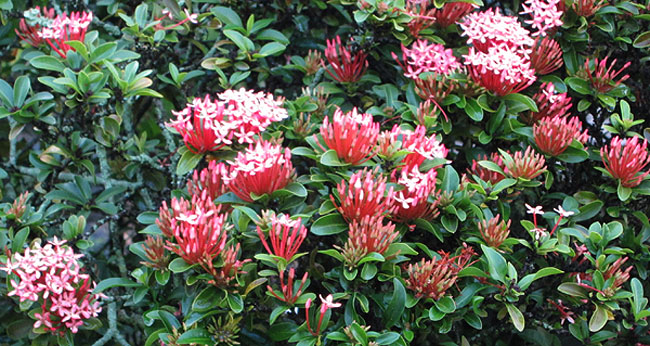












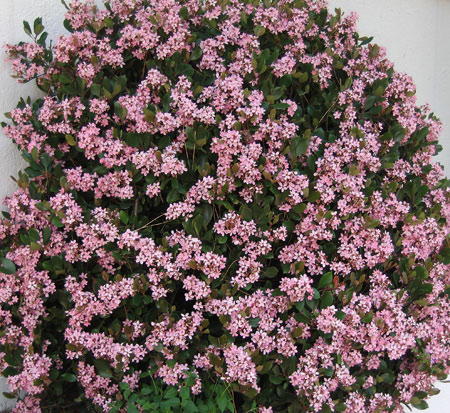
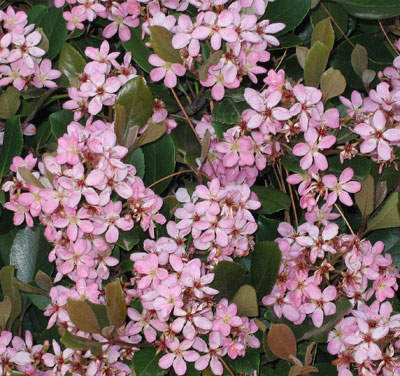
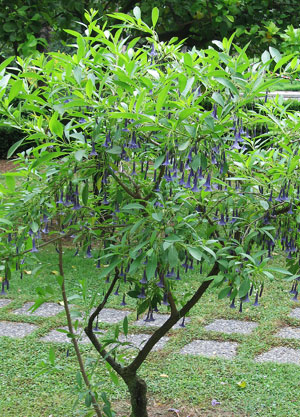
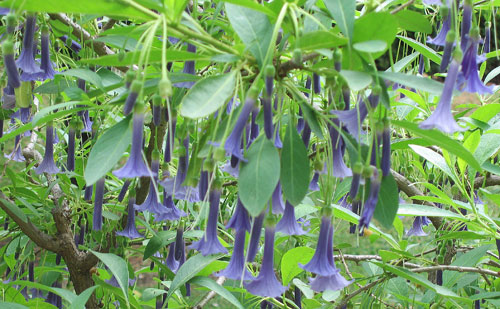
 Purple
Bells, Indigo Iochroma Lochroma 'Indigo' lochroma
warscewiczii
Purple
Bells, Indigo Iochroma Lochroma 'Indigo' lochroma
warscewiczii







